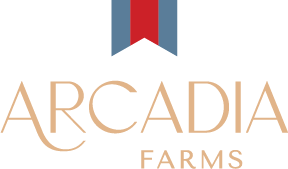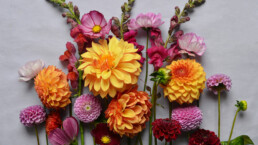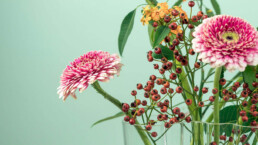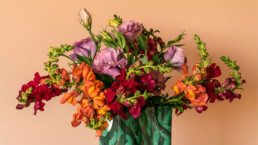Are other home remedies as effective as flower food?
We can say that most home remedies try to solve some of the post-harvest problems of cut flowers, but there isn’t one among them that optimally supports leaf and flower development. All home remedies lack clear instructions regarding accurate dosage and composition. Also, the composition of nutrients is too small to support the natural development of flowers and leaves as it would occur on the plant.
- Chlorine: an aggressive product for plant tissues, clothing and human skin. Dosage must be very precise in order not to damage both flowers and leaves. Even if applied properly, its effect is very short-lived, because household chlorine stops working after half a day, while the cut flowers require support during their entire vase life.
- Soft drinks: the amount of food supplements in soft drinks is too small to support natural leaf and flower development as it would occur on the plant. Any positive effect of this remedy is because of the sugar content and the pH level.
- Sugars: they are a good food source for micro-organisms and ensure quick contamination of the vase water. This remedy is too one-sided to be effective for normal leaf and flower development.
- Copper coins: copper only affects the vase water. The release of copper from coins, (few coins still contain any copper these days) is very slow and therefore not effective.
Of the above ‘home remedies’, only soft drinks have any positive effect at all, but this is expensive compared to commercially available cut flower food. Consumers should always ask for flower food with each bouquet bought in order to get even longer lasting enjoyment from their flowers.
Why should you (re-)cut the stems?
There are 3 main reasons for cutting the stems:
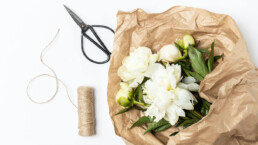
- After the grower has cut the flower from its mother plant or the roots, the stem wound immediately begins to heal itself, much like a wound on our skin. The cut off flower stem protects itself against infections and drying out through the cutting wound by sealing it. This means that when cut flowers are put into a container or vase solution, the water absorption is greatly decreased or even completely stopped, resulting a premature demise of the entire flower.
- Wounds on the stem bark are an excellent food source for micro-organisms. Micro-organisms only grow if they have something to feed on in the container or vase. Large amounts can cause loss of quality in some cut flowers, because they can partially plug the bottom of the stem. This is one of the main reasons to cut off a piece of the stem after a ‘dry’ period and it also prevents contamination of the container or vase.
- Contaminated and organic materials plug up the cut surface, just like air bubbles in a dried out stem-end. This also causes the premature wilting of the cut flowers. By cutting the bottom of the stem (by at least 1-3 inches) these blockages are removed.
Advice
If cut flowers have been dry for more than 30 minutes e.g. on their journey from wholesaler to shop, or shop to home, or simply the vase has become empty, cut off 1-3 inch before placing them in a container or vase. This applies to all phases of the flower’s life. Working in a clean environment, removing contamination and avoiding stem damage all help to prevent waste, save money and ensure normal flower development as well as a satisfied customer!
What are the best cut flower care tips for consumers?
NOTE TO FLORISTS; FEEL FREE TO SHARE THIS INFO ON YOUR BUSINESS WEBSITES!
- Always buy fresh flowers to enjoy them as long as possible
- Ensure that you have enough cut flower food for the size of the bouquet and the most suitable vase (min. vase size is 1 litre) – this should be attached to the bouquet you buy. If not, always ask for it!
- Always use a clean vase (do not use metal or antique crystal vases) and fresh COLD tap water
- Add flower food: following the instruction on the back of the pack regarding volume of water.
- Cut at least 2 cm off the stem; 5-10 cm is better.
- Cut the stems with a sharp, clean knife or secateurs at an angle to prevent damaging and flattening of the stem
- Remove lower leaves which otherwise will be in the vase water, but don’t remove the thorns
- Be careful where you place your bouquet: flowers don’t like draughts, direct sunlight, proximity to a heater, smoke and the gasses of ripening fruits!
- Top up with fresh water and the same flower food when the water has decreased to about 1/3 of the height of the vase
- Enjoy your flowers!
What are the effects of under- and overdosing flower food?
The composition of cut flower food is like a balanced diet for cut flowers. The universal products are a general diet for all cut flowers and the speciality flower foods are a diet that is fine-tuned according to the needs of a particular flower type. Cut flower research has shown that even within a flower type there can be variations. In practice, though, speciality flower foods are not always available. The ultimate goal is to provide cut flowers with the food and water as if still intact to the mother plant. Over- or underdosing with flower food will cause a less than optimum result.
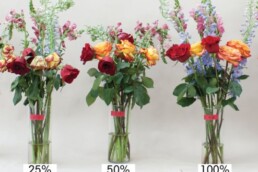
The greater the deviation, the more disappointing the result will be, sometimes even negative. It is not good for the general condition and lowers the life expectancy. Underdosing is most critical and shortens the vase life the most. Less than 80% of the recommended dosage can lead to the following deviations:
- Stem discoloration
- Delayed flower, leaf, form, color and scent development
- Limp petals
- Limp leaf and leaf discoloration
Overdosing flower food by more than 150% of the recommended amount can lead to stem discolouration and burnt leaves. Our tip is to always to add the right amount of flower food to the indicated amount of water by following the instructions on the back of the pack.

